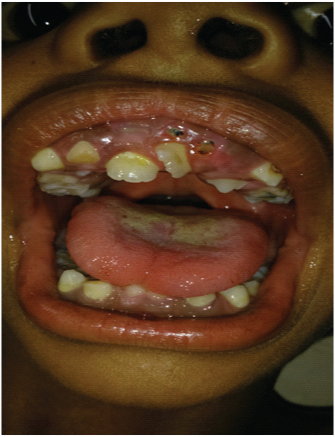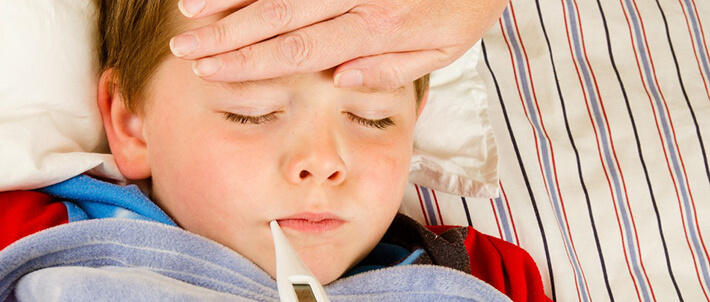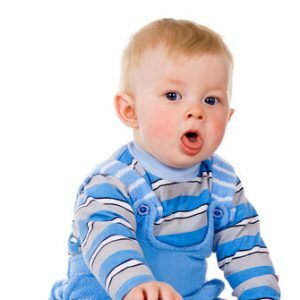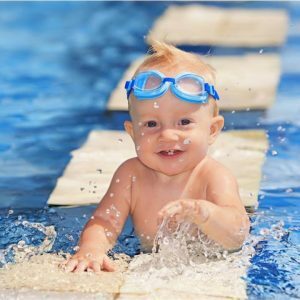Robinov's syndrome: what is it, causes, signs, treatment, prognosis
Content
- What is Robinoff Syndrome?
- Clinical signs of Robinov syndrome
- Causes of Robinov Syndrome
- Affected populations
- Diagnostics
- Robinov syndrome treatment
- Forecast
- Similar disorders
What is Robinoff Syndrome?
Robinoff syndrome is an extremely rare hereditary disorder that affects the development of bones and other parts of the body. There are two forms of Robinov's syndrome, which differ in signs and symptoms, the severity, the type of inheritance, and the genes associated with them.
First, autosomal recessive Robinov syndrome is more severe and is characterized by:
- shortening of long bones in the arms and legs;
- short fingers and toes;
- spine-shaped bones of the spine, which leads to abnormal curvature of the spine (kyphoscoliosis);
- draining or missing ribs;
- short stature;
- distinctive facial features.
Other features may include:
- underdevelopment of the genitals;
- dental problems;
- kidney or heart defects;
- developmental delay.
Children with second form, autosomal dominant Robinov's syndrome have similar symptoms, but manifesting more mildly. Anomalies of the spine and ribs are usually absent, and short stature is less pronounced.
Some people with autosomal dominant Robinov's syndrome may also have increased bone mineral density (osteosclerosis).
Clinical signs of Robinov syndrome

Robinov's autosomal recessive syndrome is characterized by:
- short stature;
- characteristic facial features;
- skeletal abnormalities and / or genital abnormalities.
The range and severity of clinical signs vary from person to person.
Most children with Robinoff syndrome experience growth retardation after birthwhich results in little to moderately short stature. Most children have normal intelligence, but about 20 percent of those affected may have:
- mental impairment;
- delays in reaching milestones;
- delays in the development of language skills.
Facial features resemble signs of a developing fetusThis is often referred to as the "fetal face" in the medical literature. Characteristic abnormalities of the head and facial area may include big head (macrocephaly) with a bulging forehead and underdevelopment of the midface (midface hypoplasia).
Affected children may also have:
- Widely spaced eyes (ocular hypertelorism) that protrude out of the orbits (bulging eyes)
- unusually wide slanting eyelids (eye slits);
- a small upturned nose with nostrils flared forward;
- sunken bow bridge;
- Incorrectly placed (i.e. low set, turned back) ears.
Some affected children may have:
- a wide, triangular mouth, turned downward, with a long slit in the center of the upper lip;
- small chin;
- small jaw (micrognathia);
- gingival hyperplasia.

Dental abnormalities may also be present, including:
- misalignment of teeth;
- posterior crowding of teeth;
- delayed eruption of secondary (permanent) teeth.
The soft tissue structure at the back of the throat (uvula) may be underdeveloped or abnormally divided (bifurcated). Affected children may also have a cleft palate, an abnormal vertical groove, or a hole in the upper lip (cleft lip) and / or limited movement of the tongue (ankyloglossia).
Ankyloglossia can contribute to delays in the development of language skills. In most children, the facial abnormalities associated with Robinov's syndrome become less pronounced with age.
Skeletal abnormalities may include:
- pathologies of the bones of the forearm (radius and ulna), which look abnormally short and underdeveloped (forearm brachymelia);
- an unusual deviation of the side of the thumb of the forearm (radius) due to shortening of the radius (madelung wrist);
- unusually short fingers (brachydactyly);
- permanent fixation of the fifth toe in a flexed position (clinodactyly);
- abnormally small hands with wide thumbs.
The terminal bones (terminal phalanges) of the big toes may be abnormally separated and / or the bones (phalanges) of the fingers and toes may be underdeveloped (hypoplastic). Additional abnormalities may include:
- displacement of the hip joint;
- limited elbow extension, abnormal fusion or absence of certain ribs;
- abnormal curvature of the spine from side to side (scoliosis);
- underdevelopment of one side of the bones (vertebrae) in the middle (thoracic) part of the spinal column (hemivertebra);
- fusion of some vertebrae.
Read also:Ehlers-Danlos Syndrome
Affected children may experience abnormal bone deepeningforming the center of the chest ("funnel chest"). Children may also have deformed (dysplastic) nails and / or abnormalities in the skin ridge patterns on the fingers and palms.
Most children with Robinoff syndrome also have genital anomaliesand some may have external genitals that are not clearly male or female (ambiguous genitals). Gender can usually be correctly identified in early childhood. Among women The clitoris and the outer elongated folds of skin on either side of the vaginal opening (labia majora) may be underdeveloped (hypoplastic). In men the penis may be abnormally small (micropenis) and may be hidden under the surrounding skin; In addition, one or both testicles may not descend into the scrotum (cryptorchidism).
Rarely, affected men may have abnormally low levels of testicular function (partial primary hypogonadism, but there is a normal development of secondary sexual characteristics (for example, a rough voice, characteristic patterns hair growth, sudden increase in growth and development of testes and scrotum, etc.), except for persistence micropenis.
Affected women show normal ovarian function (gonadal function) and normal fertility.
People with Robinoff syndrome may have additional physical disabilities, such as:
- doubling of the kidneys;
- unusual accumulation of urine in the kidney (hydronephrosis);
- bulging of parts of the colon through an abnormal opening in the lining of the abdomen (inguinal hernia);
- bulging of sections of the colon through the abdominal wall near the navel (umbilical hernia).
In addition, approximately 13 percent of babies with Robinoff syndrome have at birth heart defects (congenital heart defects). In these cases, the most common heart defect is "right ventricular obstruction," in which blood flow from the lower heart chamber (ventricle) is blocked due to abnormal narrowing (stenosis) or closure (atresia) of a vessel arising from the ventricle (pulmonary trunk) and dividing into left and right pulmonary arteries.
Symptoms associated with this heart defect vary greatly depending on the size and location of the obstruction. Some children with Robinoff syndrome may have other heart problems, including complex congenital heart defects, which can lead to life-threatening complications.
Rarely, infants and children with Robinoff syndrome may be prone to recurrent lung infections (pneumonia). In rare, severe cases without appropriate treatment pneumonia can lead to life-threatening complications.
Dominant and recessive forms of Robinov's syndrome have many of the same symptoms and physical signs (eg, craniofacial abnormalities, short stature, malformations of the skeleton, and hypoplasia of the genital organs). However, the symptoms and physical signs associated with the recessive form tend to be more severe.
Babies with recessive Robinov syndrome show more numerous rib abnormalities (eg, abnormal displacement, fusion and / or the absence of certain ribs) and defects affecting the bones of the spine (vertebrae) than in dominant infants diseases. In addition, short stature, underdevelopment of the bones of the forearm (radiation hypoplasia), and anomalies of the fingers are more severe. Affected children may have a dislocation of the head of one of the bones of the forearm, and this anomaly is rarely seen in people with the dominant form of Robinov's syndrome. People with a recessive form may also have a more triangular mouth shape.
A variant form of the autosomal dominant Robinov's syndrome, the osteosclerotic form, is characterized by:
- increased bone mineral density, especially in the skull;
- normal growth;
- big head;
- and hearing loss, in addition to the typical signs and symptoms.
Read also:Acetone in the urine of a child (acetonuria in children): what to do, causes, symptoms, treatment
Causes of Robinov Syndrome

Autosomal recessive and autosomal dominant forms of Robinov's syndrome are caused by changes (mutations) in different genes.
Autosomal recessive type disease occurs due to mutations in the gene ROR2leading to a lack of protein ROR2. Without this protein, the development of the child is impaired, especially the formation of the skeleton, heart and genitals.
Autosomal dominant type disease occurs due to mutations in the gene WNT5A or gene DVL1, which leads to a lack of specific proteins necessary for normal development. The osteosclerotic form is caused by mutations gene DVL1.
A small percentage of children with Robinoff syndrome do not have mutations in any of these genes, and the cause of the disease remains unknown.
Most genetic diseases are determined by the status of two copies of a gene, one from the father and the other from the mother. Recessive genetic disorders occur when a person inherits two copies of an abnormal gene for the same trait, one from each parent. If a person inherits one normal gene and one gene for the disease, the person will carry the disease but usually show no symptoms. The risk for two carrier parents who both pass on the altered gene and infect the baby is 25% with each pregnancy. The risk of having a child who will be a carrier, like a parent, is 50% with each pregnancy. A child has a 25% chance of getting normal genes from both parents. The risk is the same for men and women.
Parents who are close relatives (incest) have a higher chance of having a sick child than unrelated parents.
Dominant genetic disorders occur when only one copy of an abnormal gene is needed to cause a specific disease. The abnormal gene can be inherited from either parent, or it can be the result of a new mutation (gene change) in the affected person. The risk of passing the abnormal gene from the affected parent to the offspring is 50% for each pregnancy. The risk is the same for men and women.
In some people, this disorder is caused by a spontaneous genetic mutation that occurs in the egg or sperm. In such situations, the disorder is not inherited from the parents.
Affected populations
Autosomal recessive syndrome has been reported in less than 200 people in families from different ethnic groups.
Autosomal dominant syndrome has been reported in less than 50 families.
Diagnostics
The diagnosis of Robinoff syndrome is usually made shortly after birth based on physical findings, including short stature, limb and genital anomalies, and facial features.
Molecular genetic testing for the gene is available to confirm the diagnosis of autosomal recessive Robinov's syndrome ROR2. Molecular genetic testing for mutations in a gene WNT5A and gene DVL1 available to confirm the diagnosis of an autosomal dominant type of disease.
Robinov syndrome treatment
Treatment for Robinov's syndrome focuses on the specific symptoms that each person experiences. Treatment may require the coordinated efforts of a team of specialists. Pediatricians, specialists in the treatment of skeletal disorders (orthopedists), surgeons, specialists in the diagnosis and treatment of heart problems (cardiologists), physical therapists and / or other health care providers may need systematic and comprehensive treatment planning injured child.
In affected children with ambiguous genitals, gender can be correctly determined by clinical examination during the neonatal period. In some children, surgery may be performed and / or other measures may be taken to correct cryptorchidism and / or other genital abnormalities. In addition, hormonal supplements such as human chorionic gonadotropin and / or testosterone are sometimes administered to treat micropenis by improving penile length and testicular volume. Growth hormone deficiency has been found in some patients to respond positively to growth hormone therapy. However, these forms of hormone therapy must be closely monitored by a pediatric endocrinologist.
Special exercises and / or surgery may be helpful in treating certain spinal disorders. Surgery may also be performed to correct inguinal hernias, certain craniofacial abnormalities, severe curvature of the spine (scoliosis) secondary to in relation to abnormalities of the hemivertebra and ribs, fully or partially joined fingers / toes (syndactyly), cleft lip / palate and / or other defects development. Braces, dental surgery, and / or other supportive therapies can help correct misaligned teeth and / or other oral abnormalities.
Read also:Dyslexia
Babies and children with Robinoff syndrome must undergo a thorough medical examination to ensure prompt identification and immediate appropriate treatment of cardiac pathologies that could potentially be associated with this disorder. Affected infants and children should also be closely monitored to help prevent and / or detect lung infections (pneumonia) immediately and provide prompt, appropriate treatment.
Early intervention is essential for children with Robinov Syndrome to reach their potential. Special services that may be helpful to affected children may include remedial education, social support, physical therapy and / or other medical, social and / or professional services.
Forecast
The prognosis for Robinov syndrome is generally good, but the severity of the heart disorder can affect life expectancy.
Similar disorders
Symptoms of the following disorders may be similar to those of Robinov's syndrome. Comparisons are useful for differential diagnosis:
AchondroplasiaIs an inherited disorder characterized by abnormally short arms and legs and short stature (dwarfism of short limbs), abnormal facial features and / or malformations of the skeleton. Facial features may include an abnormally large head (macrocephaly), an unusual bulging of the forehead, a low nasal bridge, and / or underdevelopment of the midface (midface hypoplasia).
Skeletal malformations can include unusually short fingers and toes (brachydactyly), a sagittal bend of the spine that is bulging forward (lordosis), narrowing (stenosis) of the spine. Additional disorders may include problems with elbow and hip extension, decreased muscle tone (hypotension), and / or frequent middle ear infections (otitis media).
Achondroplasia is an autosomal dominant genetic disorder.
Aarskog's syndrome is a very rare hereditary disorder characterized by anomalies of the head and face (craniofacial) area, small to moderate short stature, skeletal malformations and / or genital anomalies. Facial features may include widely spaced eyes (ocular hypertelorism), tilted downward folds of the eyelids (eye slits), small nose with nostrils and / or underdevelopment of the upper jaw (hypoplasia of the upper jaw).
Skeletal malformations can include abnormally short toes (brachydactyly), permanent fixation of the fifth toes in a flexed position (clinodactyly), and / or unusually wide thumbs. Genital abnormalities may include an abnormal fold of skin extending around the base of the penis and / or the inability of one or both testicles to descend into the scrotum (cryptorchidism). Some affected children have mild mental retardation.
Aarskog syndrome is an X-linked genetic disorder.
Omodysplasia Is a rare inherited bone disorder that can be characterized by abnormal shortness of some of the long bones of the arms (e.g., the humerus) and legs (i.e., the thigh bones), short stature and characteristic facial features, including a depressed nasal bridge, a wide base of the nose, and / or an unusually long vertical groove (groove) in the center of the upper lips.
In addition, affected children may have abnormal separation of the two bones of the forearm (radial diastasis), dislocation of the radial head and / or underdevelopment (hypoplasia) of a rounded bone mass (condyle) at the end shoulder.
Omodysplasia can be inherited as an autosomal recessive or autosomal dominant genetic condition.



